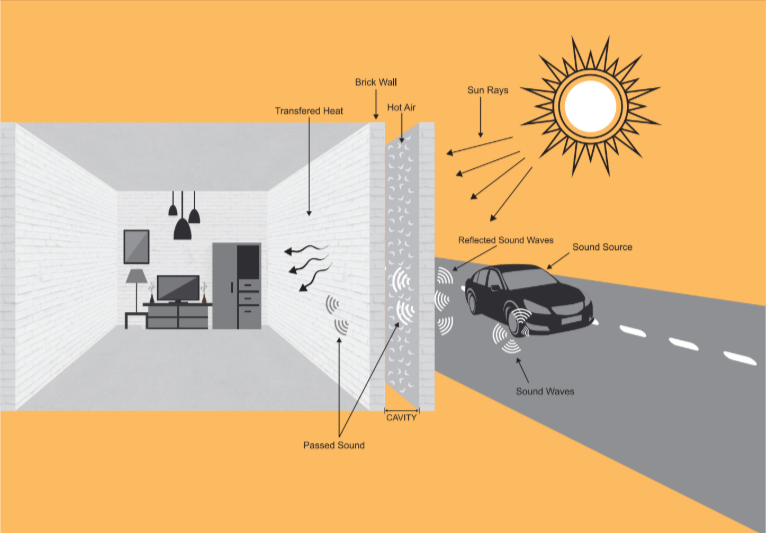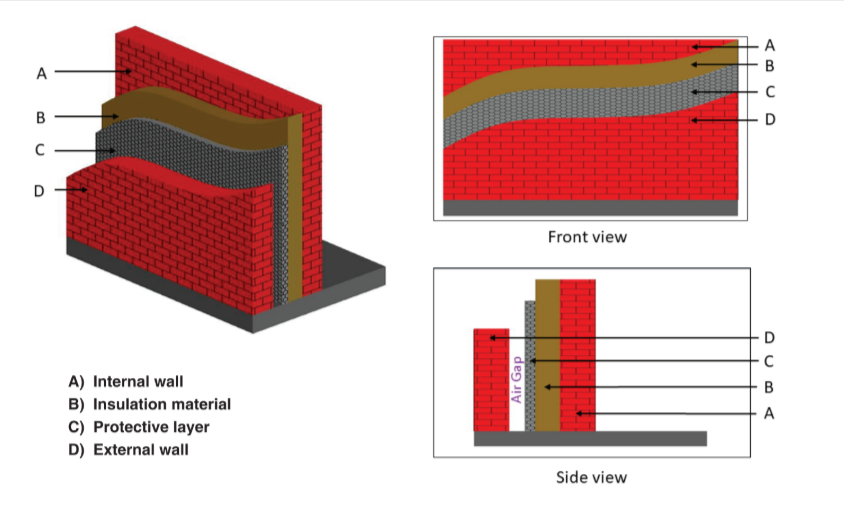Let’s Start Work
Together
Please feel free to contact us. We will get back to you with 1-2 business days. Or just call us now.
Brochure
Download our document to see specific data of the service and how we work.
CAVITY BLOCKS CONDUCTION
A cavity wall is two layers of masonry with an air gap in between. The air gap is called Cavity. Cavity between two walls is used to overcome the effect of direct conduction through the wall. The air trapped inside the cavity acts as insulation and eliminates direct conductive heat transfer through the wall. But still, transfer of heat by convection cannot be eliminated.
CAVITY CANNOT BLOCK CONVECTION
In summers, atmospheric temperature is more than the room temperature. So heat is transferred from atmosphere to the outside of external wall through convection. This heat is transferred inwards by conduction and then to the cavity through convection. The air trapped inside the cavity gets heated up and this hot air moves up to the top surface and circulates inside the cavity as more air gets heated up. The heated air transfers heat to the outside of the internal wall through convection, which then reaches the inside of the internal wall by conduction.
- Heat transfer by convection cannot be eliminated
- In summers, atmospheric temperature is more from room temperature
- The air trapped inside the cavity gets heated up
INCAVITY SYSTEMS CAN HELP
Insulation material with higher thermal resistance and lower thermal conductivity (read InCavity) placed in the cavity can reduce the heat transfer. Insulation material with protective layer is preferable for eliminating the risk of condensation, which works as a moisture resistance barrier. As there are two walls in this system, thermal bridging is not an issue. However, if it does arise, it is solved with external wall (first layer) only.
A combination of insulation materials can be used to enhance the acoustic performance of this cavity. We suggest maintaining an air gap post insulation material application, which can help in the performance of the system.
This system works in protecting the building from thermal and acoustic ingress as well as battles against moisture and condensation. The material selection in this system is done for thermo-acoustic insulation. The suggested layer thickness can vary from 75 mm to 150 mm. An isolation layer is suggested in this system for optimal results.
Ideal For
Villas, High-end Apartments and Residences, Sports Complexes, Exclusive Farmhouses, R&D Centres, And Buildings In Extreme Weather Conditions
- InCavity Systems can reduce heat transfer, improve acoustic performance and protect against moisture



